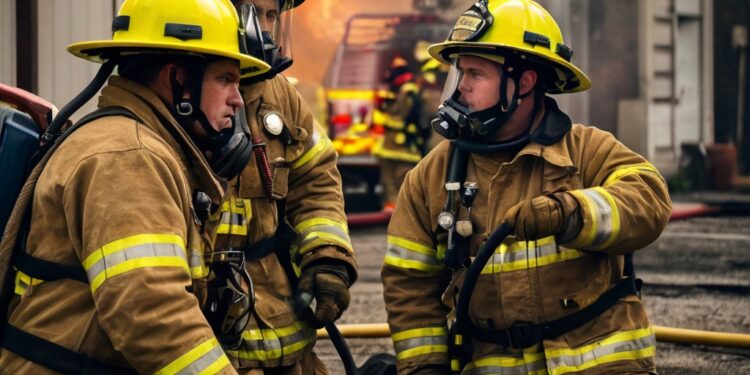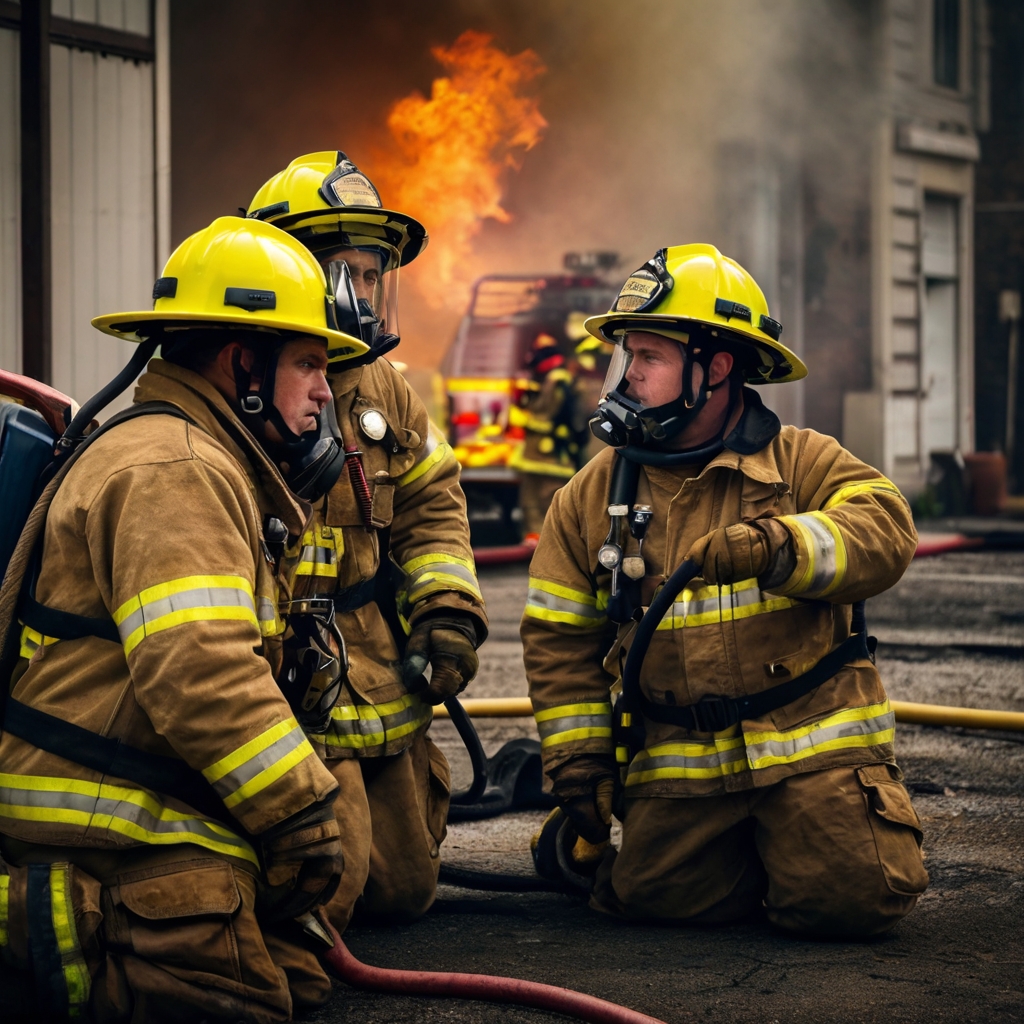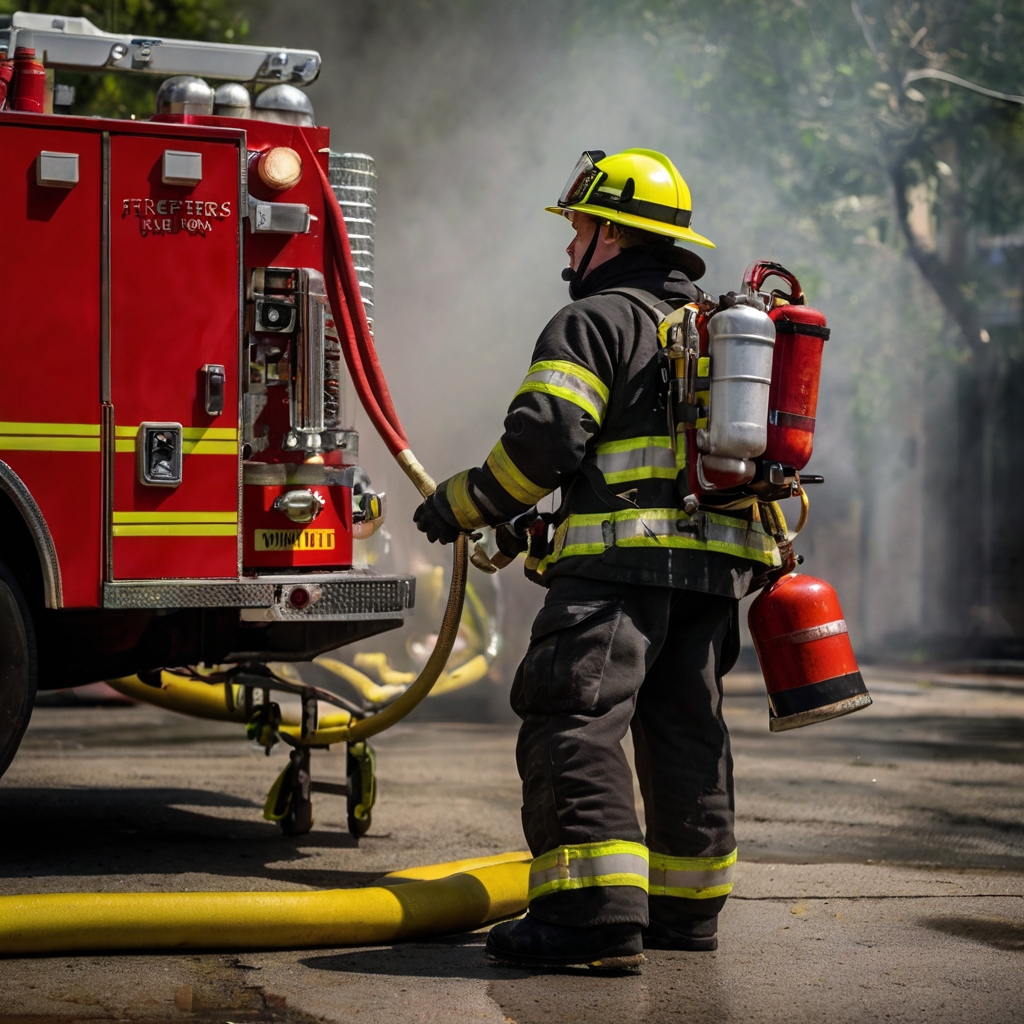Firefighter Schedule

Firefighters work an extraordinary 56 hours weekly, with their schedule split into intense 24-hour shifts. Most professionals follow a standard 40-hour week, but firefighters operate on a completely different timeline. They work about 10 shifts monthly in a continuous cycle of service.
The reality shows that 94% of fire departments just need more staff, which shows how hard it is to keep these demanding schedules running. A firefighter’s work schedule changes based on the department. Some use the traditional 24/48 pattern while others follow the California swing shift system. Each approach brings its own challenges. These unique scheduling requirements impact everything from sleep patterns to family life. It creates a lifestyle that outsiders rarely understand.
This piece uncovers the real story behind firefighter shift schedules. It reveals the hidden challenges and adaptations needed for this vital public service role.

Table of Contents
- 1 Basic firefighter shift patterns explained
- 2 Daily life during 24-hour shifts
- 3 Hidden challenges of long shifts
- 4 Impact on personal relationships
- 5 Managing time between shifts
- 6 Here are some FAQs about the firefighter schedule:
- 6.1 What is the most common schedule for a firefighter?
- 6.2 What is a 5 2 5 3 work schedule?
- 6.3 What is the best shift schedule for a firefighter?
- 6.4 What is a 4 3 3 4 shift schedule?
- 6.5 What is a 1/3 2/3 schedule?
- 6.6 What are the busiest days for firefighters?
- 6.7 What is the 4 5 5 4 schedule?
- 6.8 What is a typical 8-hour shift?
- 6.9 What is the 4 2 3 schedule?
Basic firefighter shift patterns explained
American fire departments use advanced scheduling systems that provide emergency response coverage 24/7. The patterns create a balance between operations and firefighters’ well-being that leads to sustainable work arrangements.
Common 24-hour shift schedule
The 24/48 schedule remains the most common pattern used by fire departments in America. Firefighters work a complete 24-hour shift and get 48 hours off duty. This approach lets firefighters work about ten 24-hour shifts each month. Three rotating shifts keep the coverage continuous under this system.
Alternative schedule types
Fire departments have developed several other scheduling patterns to meet their specific needs:
- The California Swing Shift: Firefighters switch between 24 hours on duty and 24 hours off for five straight days, then get 96 hours (four days) off
- The Portland Schedule: A 1-3-2-3 pattern lets firefighters work one day, rest three days, work two days, then rest three more days
- The 48/96 Schedule: This increasingly popular pattern puts firefighters on duty for two consecutive 24-hour shifts followed by four days off
How rotations work
Fire departments run with three separate shifts – A, B, and C – that rotate through the week. The three-platoon system provides consistent coverage and meets Fair Labor Standards Act requirements of roughly 56 work hours per week.
The rotation follows a predictable pattern. To name just one example, see how Shift A works Monday, Shift B takes Tuesday, and Shift C covers Wednesday, then Shift A returns for Thursday. This systematic approach helps departments maintain proper staffing levels and gives firefighters a reliable schedule to plan their lives.
These detailed scheduling patterns have become more sophisticated over the last several years. The 48/96 schedule has become particularly popular, with 65 departments adopting it since the early 1990s. Fire departments that tried new schedules during trial periods saw approval ratings between 90% and 100% from their teams.
Daily life during 24-hour shifts
A firefighter’s life during a 24-hour shift follows a well-laid-out routine that balances emergency readiness with work to be done and training activities.
Morning routines and checks
The day kicks off at 0800 hours with a complete status meeting where incoming firefighters get updates and vital information from the outgoing crew. The crews then spend about 45 minutes doing detailed equipment and apparatus inspections. These full checks cover:
- Checking fuel levels and mechanical parts
- Testing emergency medical gear
- Counting medication stocks
- Looking over personal protective equipment
- Making sure communication systems work properly
Afternoon training and maintenance
The afternoon’s activities keep operations ready with a focus on building skills. Firefighters join specialized training sessions about fire suppression methods, emergency medical care, and handling hazardous materials. The crews also check local businesses for fire safety and help teach community safety programs.
Physical fitness is the life-blood of afternoon activities, and departments just need firefighters to pass two fitness tests each year. So, most stations have their own workout spaces where crews stay in shape between emergency calls.
Night protocols
Operations move to a structured standby mode starting at 2100 hours. Firefighters usually use this time to write incident reports, work on special projects, or exercise. Most departments set official rest times between 2130 and 0715, but crews must stay ready to jump into action for emergency calls.
During a typical 24-hour shift, firefighters handle about 15 emergency calls. Studies show that answering two night calls between 2200-0600 hours causes moderate sleep loss, which means crews must manage their rest carefully. Many stations have created specific night rules that include dim lighting and quiet areas to help with these challenges.
These demanding shifts mean firefighters must stay at peak readiness whatever the time. This detailed daily schedule will give a consistent emergency response while supporting the crew’s physical and mental health.

Hidden challenges of long shifts
Complex physiological and psychological challenges affect firefighters who serve in this demanding profession. Their structured routines and shift schedules create unique difficulties.
Sleep disruption realities
Studies reveal that firefighters working 24-hour shifts face severe sleep disruption patterns. Being awake for 18 hours creates impairment equal to a blood alcohol concentration of 0.05, while this rises to 0.10 after 24 hours without sleep. Firefighters often wake up for emergency calls during their sleep time, which leads to broken rest patterns.
The effects are worse when you look at firefighters with high blood pressure – all but one of these firefighters struggle with uncontrolled blood pressure. Those who work sixteen 24-hour shifts have 5.0 mmHg higher diastolic blood pressure than those following regular schedules.
Physical demands
Extended shifts take their toll on the body in several ways. We studied firefighters working seventeen to twenty-one shifts per month and found they face 3.69 to 6.03 times higher risk of obesity compared to those on standard schedules. Long periods of sitting also increase obesity risk by 4.18 times, despite having rest periods.
Cardiovascular strain gets worse under certain conditions. Firefighters at busier stations experience more cardiovascular stress because they have less recovery time between calls. Those who report higher job demands show 3.0 mmHg higher systolic blood pressure.
Mental strain
The psychological burden of 24-hour shifts goes beyond physical tiredness. Firefighters experience substantial emotional exhaustion, especially during the first 24 hours after their shifts. These effects include:
- Decreased cognitive functioning
- Heightened psychological strain
- Increased risk of burnout
- Poor decision-making abilities
Firefighters’ mental toll becomes clear as they struggle with communication and emotional availability for at least 24 hours after their shift. The effects reach beyond the firefighters themselves – their spouses feel resentful because they must handle household responsibilities alone while dealing with their partner’s emotional distance.
These hidden challenges create ripple effects throughout firefighters’ lives and affect their work performance and personal relationships. Chronic sleep loss links to more health complaints, musculoskeletal problems, and higher risks of cardiovascular disease.
Impact on personal relationships
Firefighter schedules deeply affect personal relationships and change both family life and social connections.
Family adjustments
A firefighter’s shift schedule brings unique family challenges. Parents working 48+ hours weekly face more work-family conflicts than those with regular schedules. These families struggle with several key challenges:
- Missing their children’s milestones and important events
- Parenting while exhausted
- Getting back into family routines after 24-hour shifts
- Keeping up with family events
- Dealing with guilt about missed activities
The relationship between firefighters and their spouses works like a pendulum that swings between intense togetherness and long separations. Many couples feel disconnected because the non-firefighter partner becomes a single parent during shifts.
Social life changes
The firefighter schedule makes it hard to keep social connections alive. Studies show that many firefighters see their social circle shrink because of their unusual schedules. Long hours and unpredictable shifts leave little room to meet friends outside work.
Firefighters often pull back from social interactions to process their shift experiences. The job’s unique stresses can create a gap between firefighters and friends who don’t understand what the job demands.
Marriage and family therapy helps deepen relationships. Successful firefighter families often use these strategies to stay connected:
- Planning quality time during off-duty days
- Setting clear expectations about bills, chores, and events
- Taking time to transition before and after shifts
- Talking openly about work stress
New families find it tough to adapt to the firefighter lifestyle. Professional mental health support plays a key role in keeping relationships healthy, as buried emotions can damage personal connections.
Managing time between shifts
You need strategic planning and good recovery practices to manage time between firefighter shifts and stay at peak performance.
Recovery periods
Firefighters must use both active and passive recovery methods to restore their physical and mental strength between shifts. Research shows a typical shift schedule of 24-hours on/48-hours off expects firefighters to use their off time to catch up on sleep debt.
Active recovery plays a vital role in staying ready for duty. We found this approach helps reduce lactic acid buildup in muscles and makes blood circulation better. Here are some effective active recovery methods:
- Swimming to reduce inflammation
- Light cycling for improved circulation
- Walking for 10-20 minutes daily
- Strategic stretching routines
Passive recovery becomes vital after tough shifts. Studies show good passive recovery helps restore muscle glycogen and rebuild damaged tissue. Firefighters need at least seven hours of sleep on non-shift days to reset their natural sleep patterns.
Recovery periods change based on shift patterns. A 3-day cycle gives firefighters 48 hours to recover, while 9-day and 21-day cycles offer between 24 to 72 hours. Research suggests one off-duty day isn’t enough, so two or more days are needed after shifts that mess with circadian rhythms.
Second job considerations
Many firefighters work additional jobs during their off-duty time, but they need to think about their recovery needs first. Studies show about 54.8% of firefighters take on off-duty work more than once monthly.
Second jobs should fit with a firefighter’s demanding schedule. Poor rest between shifts can lead to less motivation, more irritability, and low morale. Most private and public employers accept second jobs as long as they don’t get in the way of primary firefighting duties.
Managing time becomes significant when you juggle multiple roles. Firefighters used to struggle with this balance, but research now shows the importance of looking at the whole year-round schedule before taking on extra work. The secret is finding flexible work that lets you adjust around your firefighting duties.
Physical demands need special attention when you think about taking a second job. Research shows strain, sprains, and muscular pain make up 58% of all non-fireground injuries. Firefighters should pick second jobs that don’t hurt their recovery or readiness for duty.
Extra income from another job needs to be weighed against how it might affect performance and health. Second jobs can boost your income, but they shouldn’t interfere with staying in top shape for emergency response. Above all, firefighters must make sure their second job allows enough rest and doesn’t affect their ability to respond well during primary shifts.
Firefighters work in ways that set them apart from regular jobs. Their schedules need extraordinary dedication and bring unique challenges. The 24/48 pattern remains the norm, but fire departments across the country are learning about new schedules to better match their operational needs and staff wellbeing.
Long shifts take a toll on firefighters’ bodies and minds. This creates lasting effects throughout their lives. Job performance and personal relationships suffer from disrupted sleep, heart strain, and emotional burnout. Families cope through careful planning, honest talks, and support from professionals.
The best firefighters find ways to balance their work and personal lives effectively. They know recovery time matters deeply. Some choose active recovery like gentle workouts while others opt for proper rest. Many firefighters pick up second jobs, but they must think over the physical toll and their body’s need to recover.
Communities should know the true extent of firefighters’ sacrifices. Their dedication goes way beyond the reach and influence of emergency response. It includes a lifestyle that few other jobs require. These brave professionals keep serving their communities despite personal hurdles, which shows the true meaning of public service.
Here are some FAQs about the firefighter schedule:
What is the most common schedule for a firefighter?
The most common firefighter schedule is the firefighter 24-hour shift schedule, which involves 24 hours on duty followed by 48 hours off. This firefighter shift schedule allows for continuous emergency response while ensuring firefighters have recovery time. Some departments use variations like the 48/96 schedule, where firefighters work 48 hours straight and then have 96 hours off.
What is a 5 2 5 3 work schedule?
A 5 2 5 3 work schedule means firefighters work five days, have two days off, then work five more days followed by three days off. This firefighter work schedule is designed to maintain coverage while giving firefighters adequate rest. It is less common than the firefighter 24-hour shift schedule but is still used in some departments.
What is the best shift schedule for a firefighter?
The best firefighter shift schedule depends on the department’s needs and individual preference. Many firefighters prefer the firefighter 24-hour shift schedule because it allows them to work fewer days per month. However, some prefer rotating 12-hour shifts or the 48/96 schedule, which provides longer periods of time off between shifts.
What is a 4 3 3 4 shift schedule?
A 4 3 3 4 shift schedule means a firefighter works four days, has three days off, then works three days followed by four days off. This firefighter work schedule is designed to balance workload and recovery time. While not as common as the firefighter 24-hour shift schedule, it is used in certain fire departments.
What is a 1/3 2/3 schedule?
A 1/3 2/3 schedule means a firefighter works one day and has three days off, then works two days and has three days off. This firefighter schedule allows for frequent rest periods while maintaining coverage. It is used in departments that require round-the-clock staffing.
What are the busiest days for firefighters?
Weekends and holidays are often the busiest days for firefighters due to increased fire risks, medical emergencies, and traffic accidents. A firefighter work schedule must account for these peak times by ensuring adequate staffing. Departments using a firefighter shift schedule will often have more personnel on duty during these high-demand periods.
What is the 4 5 5 4 schedule?
The 4 5 5 4 schedule means working four days, having five days off, working five days, and then having four days off. This firefighter shift schedule helps distribute shifts evenly while providing sufficient rest. It is sometimes used as an alternative to the firefighter 24-hour shift schedule.
What is a typical 8-hour shift?
A typical 8-hour shift is a standard workday where firefighters work either a morning, afternoon, or night shift. This is different from the firefighter 24-hour shift schedule but is used in some departments with high call volumes. Firefighters on an 8-hour shift work more days per week compared to those on a firefighter shift schedule with longer shifts.
What is the 4 2 3 schedule?
A 4 2 3 schedule involves working four days, having two days off, then working three days, followed by two days off. This firefighter schedule helps balance workload while ensuring continuous coverage. Some fire departments use this as an alternative to the firefighter 24-hour shift schedule.

